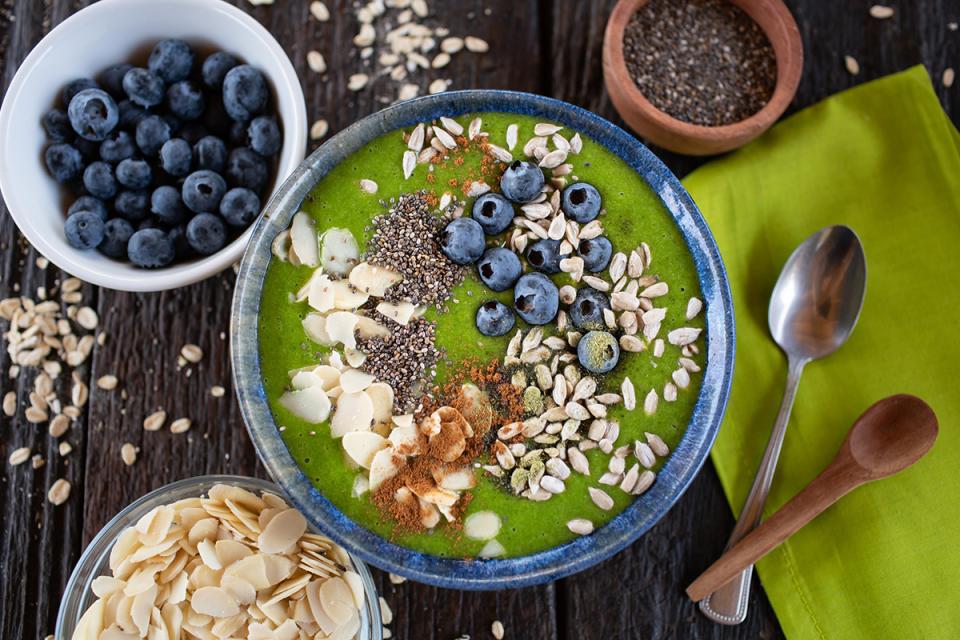1. Begin with your base
Water, coconut water or non-dairy milks (such as unsweetened almond, oat or cashew milk) are the best base options to use when building your smoothie. We recommend you avoid using fruit juices, because they tend to add extra calories and unnecessary sugars.
2. Add in some greens
Greens like spinach, kale, chard and lettuce are all great replacements for fruit. By filling up on greens and vegetables instead of using just fruit, you’re reducing the amount of sugar in your smoothie and increasing your dose of vitamins K and A, and folate.
3. Use fruit as an enhancer
Fruits can act as a flavor enhancer. You don’t have to use a lot of fruit to get that refreshing tropical, berry or citrus flavor. Some great fruit choices, that also provide a boost of vitamin C, include blueberries, strawberries, blackberries, pineapple, lemon and lime.
4. Add a little bit of healthy fat
To help you feel full longer, try adding one tablespoon of almond butter or a half to a whole avocado (depending on size and how much healthy fat you want to add). This will also give your smoothie a creamier texture.
5. Boost it
There are a variety of supplement boosts you can add to your smoothie to increase its health benefits. Some options are flax seeds, matcha, cocoa powder, cinnamon, turmeric, ginger and more. You can even try herbs like mint and basil. Supplements have a variety of health benefits, from reducing inflammation to helping you increase your energy. Look for the supplement that’s right for you.
6. Top it
Adding a topping of some nuts and seeds can provide an additional source of healthy fats and protein. Or if you’re feeling really inspired, experiment with a homemade mix of nuts, seeds and fresh berries.
It’s time to get creative and build your perfect smoothie!
